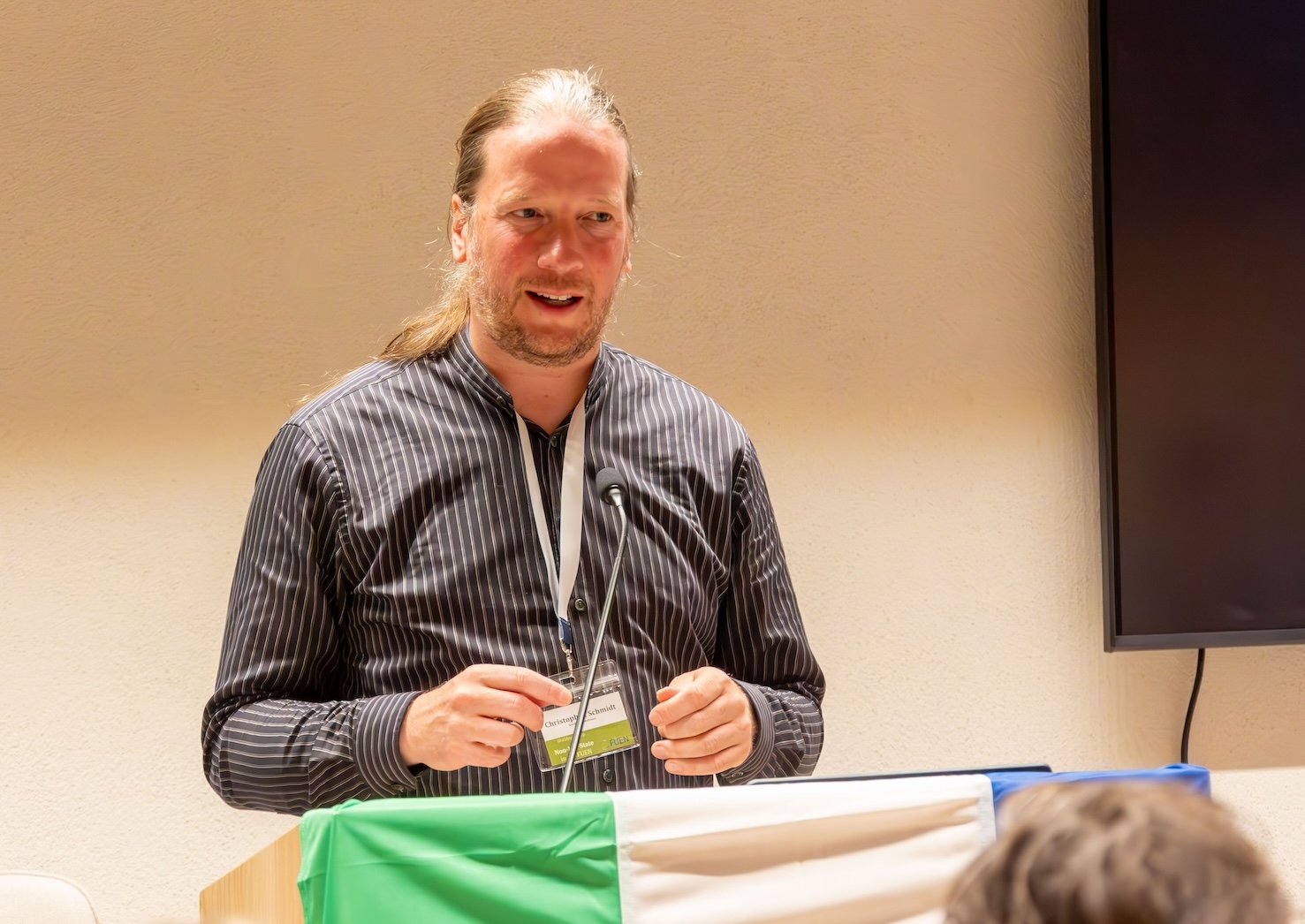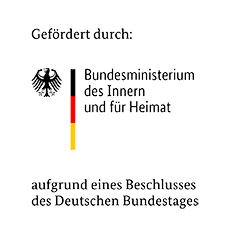
Strangely Familiar, Yet Quite Different
Ladin and North Frisian are in a similar situation – but dealt with in very different ways
At the end of May, the FUEN Working Group “Non-Kin-State” met in the South Tyrolean Val Badia. Christoph G. Schmidt, director of the Nordfriisk Instituut – dedicated to the research, promotion, and preservation of the North Frisian language, history, and culture – was invited as a guest speaker and discovered many connections to Frisian.
An ancestral language spoken only by a small group and further divided into strongly divergent dialects. Surrounded by a much stronger regional and a dominant national language. In addition, a World Heritage Site, whose establishment once made locals feel threatened in their habits, but which today seems indispensable as the main source of income. Along with it, however, comes the danger of “over-tourism,” with all its consequences: barely affordable real estate prices, few jobs for highly qualified professionals and freelancers, a strong influx of people who do not speak the traditional languages, while younger people from native families leave the region. The North Frisian islands? One might think so. But the region in question looks a bit different, lying around fifteen hundred meters higher and considerably further south: the Ladin valleys in South Tyrol, Trentino, and Veneto.
These structural parallels almost invite comparison between the situation of the North Frisian language and that of Ladin. What the islands and marshlands of the Wadden Sea World Heritage Site are in North Frisia, the valleys of the Dolomite World Heritage Site are in “Ladinia”; the smaller the natural area, the more diverse the dialects. In both regions, today it is enough to master the dominant national languages – Italian in South Tyrol, German in North Frisia. Nobody needs to learn Frisian or Ladin to communicate locally. Both regions also feature, alongside the state and the minority language, another widely spoken regional language – German in South Tyrol and Low German in North Frisia – which inevitably competes with Frisian and Ladin for resources and attention. And although there are no Olympic Games looming in North Frisia, issues of gentrification and profit maximization by “external” investors are pressing there as well. How these similar situations are handled, however, is remarkably different.
What strikes one immediately in St. Vigil / Al Plan – besides the countless hotels – is the consistent trilingualism of all road signs, from directional signs and warnings to bicycle paths. All in the same font size, with Ladin listed first. So it is possible, one might like to write in the North Frisian guestbook. However, we were told that beyond official signage, English-language notices are increasingly in demand, and then Ladin is usually the first to disappear.
One fundamental element underpins everything: exact statistics and detailed legal regulations based on them. The Ladin-speaking area is precisely defined in South Tyrol, and only there do corresponding privileges apply. Every ten years, a census records which language group individuals over the age of 14 belong to. Multiple identification is not permitted, because these figures determine the distribution of public funds and recruitment for state positions. And based on these data, the boundaries of the Ladin-speaking area are drawn – those municipalities where the largest group of residents tick Ladin. Applied to North Frisia, this would render Frisian invisible outside Föhr-Land.
Conversely, every EU citizen living in South Tyrol may choose one of the three language groups (Italian, German, Ladin) in order to apply for positions in public service. The application procedure is then conducted in that language. This personal classification can be changed every five years, with two years’ notice. Such a system would be unthinkable in Germany, not least because such registrations were used in the “Third Reich” as a basis for genocide. Of course, this pigeonholing does not do justice to the complex reality with all its gray zones and overlaps, but it ensures the presence of the “smaller” languages – at least in public administration, schools, social services, or hospitals. However, “Ladin-speaking” posts are only designated for the language area, for the Dolomite valleys, and not, for example, in the provincial capital Bolzano. This leads to highly qualified people often being unable to find suitable quota-based positions; on the other hand, some posts requiring trilingual skills cannot be filled at all. Currently, of 175 positions in health services reserved for Ladin-speaking applicants, only about half are filled as required.
In an elementary school we visit, all classroom doors are open, and we are free to listen in. Children are expected to learn writing in all three languages; ideally, the language of instruction for all subjects changes weekly. In kindergarten, too, we hear all three languages in songs and language games. Connected by a corridor, we enter the middle school: here, instruction is divided about equally between Italian and German, each subject assigned to one or the other. Ladin is reduced from fifth grade onwards to just two hours per week and Catholic religious education. But it serves as a lingua franca, used whenever someone cannot fully understand or express something in Italian or German. It is impressive how confidently even non-native children switch among the three languages.
In comparison: North Frisian in North Frisia is taught almost exclusively at elementary schools, mostly as an optional subject, with a few weekly hours, often only for small groups or a single grade. It is – sadly – a completely different world. And if one considers that Ladin is mostly taught to children as their mother tongue, while Frisian classes are primarily about enabling language acquisition in the first place, the contrast is even more striking.
Thus, trilingualism is a requirement for teachers in schools within the Ladin language area. I ask Ludwig Rindler, director of the Ladin schools in the valley, whether this is also taught as part of teacher training. The answer is sobering: language knowledge, especially Ladin, is something young people bring from home. Ladin exists mainly because it is carried by the people, by the families. Yet the numbers are declining, slowly but steadily: in the Fassa Valley, between 1991 and 2021, the percentage of Ladin speakers in the municipality of Mazzin dropped from 86% to 52%, and in Moena from 75% to around 50% – how long the system will hold is therefore uncertain.
The autonomy statutes, the legal basis for multilingual school education and regional administrative languages, were introduced shortly after the Second World War. However, they only apply to the Trentino-South Tyrol region, not to Veneto, where Ladin has a much harder time. Only a few years earlier, in 1939, all South Tyroleans were asked to choose between Italian and German: either move to the German Reich (Austria had been annexed in 1938) or assimilate. This was an agreement between dictators Hitler and Mussolini to create ethnically homogeneous nation-states. Either option would likely have meant the end of Ladin language and culture. Another parallel to the North Frisians: in 1920, their choice was only between German and Danish national identities – not Frisian. Because of the war, the so-called “Option” (emigration to the German Reich) in South Tyrol was only partially implemented, but the deep social divisions remained for a long time.
North Frisian-language media hardly exist, and where they do, they are usually created on a voluntary or part-time basis; no one can make a living from Frisian-language journalism, and the texts for the now discontinued Frisian-Low German page in the regional newspaper shz were not even paid. In contrast, Ladin has “La Usc di Ladins.” Founded in 1949 as “Nos Ladins,” initially privately funded and filled by volunteers, it became professionalized and renamed in 1972. Today it appears every Saturday, entirely in Ladin. Many still work voluntarily, but at its core are fifteen full-time staff across five local editorial offices: trained journalists, editors, and graphic designers. Editor-in-chief Iaco Rigo is also widely known as an activist and musician. Regional issues, politics, the Church, and tourism dominate the content. Still, as Pablo Palfrader, head of the local editorial office in Val Badia, admits, a special sensitivity is needed: people often know each other personally and meet in other contexts, which doesn’t make critical journalism easier. Remarkably, only 20 years ago, many contributions were submitted in German or Italian and translated; now more and more are written directly in Ladin. While seven dialects are served, the standard is “Ladin Dolomitan,” developed in 1988 by Swiss linguist Heinrich Schmid, which “saved the language.” Without it, neither successful journalism nor consistent public signage would be possible. Not everyone in the Dolomite valleys sees “Ladin Dolomitan” positively, but it cannot be denied: if the North Frisian Institute publishes something in one dialect, it won’t be read on another island. And vice versa. Thus we use High German for anything meant for everyone. A unifying written standard can be helpful in this regard – if accepted.
“La Usc di Ladins” also suffers from factors that can hardly be changed: increasing demands for online content, videos, and shorter texts, but few willing to pay for them. Print circulation is declining, and how long the current financing – one-third subscriptions, one-third advertising, one-third public funding – can sustain professional journalism in a small language is uncertain.
What strikes me most is the self-confidence with which Ladin is present everywhere. Nobody is embarrassed about their language; appreciation among speakers seems high. Of course, in the “language area,” they are consistently the majority, which is far from the case for North Frisian in North Frisia. But the traditional cultural environment also seems crucial, as I experienced in passing. There are numerous choirs and vocal ensembles. Religion plays a large, binding role. Processions beginning at dawn, stretching for many kilometers from one church to another, are simply part of life; some people travel especially for them. We visit a small church perched steeply on a hillside next to a stately farm and a small cluster of houses, a “vila.” The freshly restored wall paintings glow. Mass is celebrated here only twice a year. But of course, every evening someone comes to ring the bell; neighboring farms share this honor among themselves.
At the farewell celebration in a traditional trattoria, I am given a magnificent book: some 170 pages of legends from the Dolomite valleys, written in standard Ladin but available in seven dialects via QR code; above all, it is superbly illustrated by students of two high schools with art departments – Ladin in schools is by no means regarded as child’s play. One may well be a little envious. A young history teacher, Sofia Stuflesser, who sat at my table, had led this project. She is also president of the Ladin Association in the neighboring Val Gardena. As we part, she recommends the women’s band “Ganes,” founded in 2010 and named after mythical water creatures, now an internationally known ambassador of Ladin culture. Curious, I looked them up on my return journey – this experimental folk-pop group. When one of the three singers left a few years ago, the two remaining searched for a suitable replacement. They found one – an East Frisian.
Christoph G. Schmidt
Source of the Article: Nordfriesland, No. 231, Autumn 2025 (published by the Nordfriisk Instituut).


